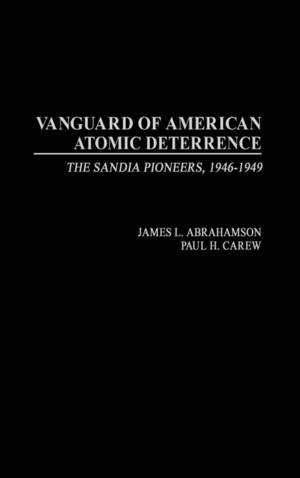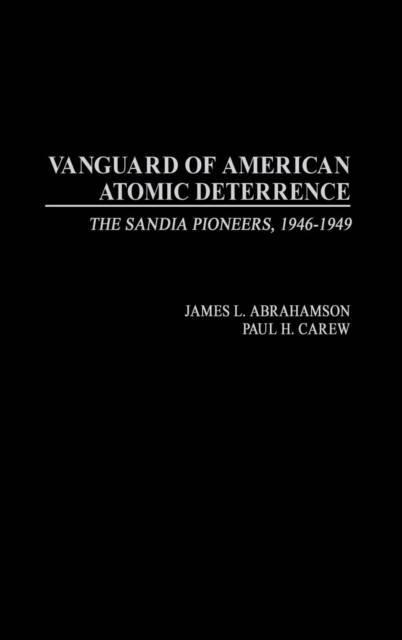
- Retrait gratuit dans votre magasin Club
- 7.000.000 titres dans notre catalogue
- Payer en toute sécurité
- Toujours un magasin près de chez vous
- Retrait gratuit dans votre magasin Club
- 7.000.0000 titres dans notre catalogue
- Payer en toute sécurité
- Toujours un magasin près de chez vous
Vanguard of American Atomic Deterrence
The Sandia Pioneers, 1946-1949
James L Abrahamson, Paul H CarewDescription
In August of 1946, General Leslie Groves, Chief of the Manhattan Project, ordered 60 young officers to Sandia, New Mexico. In a project so wrapped in secrecy that few know of it even a half-century later, Groves charged them to learn how to assemble the early and highly complex atomic bombs. With that goal accomplished, they established a school to train additional assembly teams and the weaponeers and bomb commanders needed for the services' atomic-capable aircraft. Although the wartime atomic scientists believed such tasks lay beyond the ken of military personnel, the Sandia Pioneers soon maintained even the bombs' fissionable cores and assisted the Atomic Energy Commission scientists and technicians in their pursuit of improved bomb designs. The secret history of the young officers who replaced the scientists that had assembled the first atomic bombs, proving that the military was capable of building and maintaining the atomic stockpile, is told here.
Possessed of a very special skill, the Pioneers also contributed to the construction and assembly facilities aboard aircraft carriers and at airbases in the United States and England. With the AEC lacking enough technicians to conduct the 1948 atomic tests at Eniwetok, Groves sent many of the Pioneers to assist scientists testing improvements in the design of bombs' fissionable cores. Those tests demonstrated that the new designs increased the bombs' yield while making better use of scarce plutonium, thereby permitting a dramatic increase in the size of the atomic stockpile.Spécifications
Parties prenantes
- Auteur(s) :
- Editeur:
Contenu
- Nombre de pages :
- 208
- Langue:
- Anglais
Caractéristiques
- EAN:
- 9780275978198
- Date de parution :
- 30-11-02
- Format:
- Livre relié
- Format numérique:
- Genaaid
- Dimensions :
- 177 mm x 237 mm
- Poids :
- 449 g

Les avis
Nous publions uniquement les avis qui respectent les conditions requises. Consultez nos conditions pour les avis.






